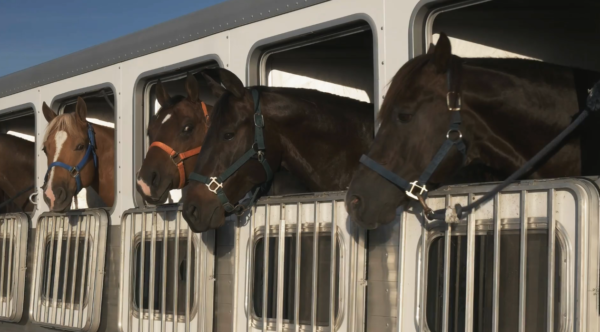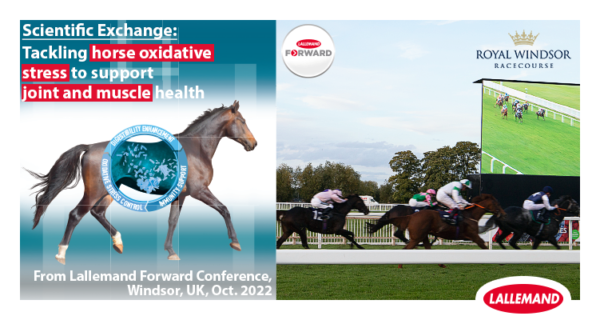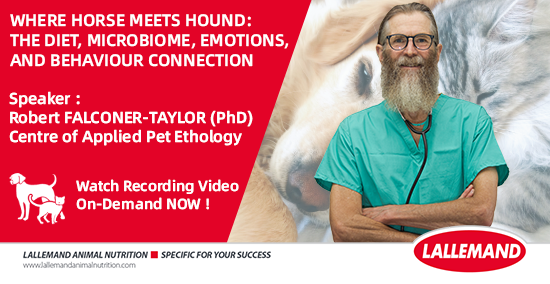Blog | Reading Time 0 minute
Expert interview: Maternal Imprinting in Horses
3 questions for Dr. Jean-Marc Betsch, Vice President, Association Vétérinaire Equine Française (AVEF), France, equine surgeon specializing in locomotor pathology.
Dr. Betsch, in your experience, what are the main challenges for the mare at the end of gestation?
This is a good question because the best way to ensure the birth of a healthy foal is to promote good growth during the foetus' life. Indeed, the last three months of gestation sees very intense growth since the fetus grows more than 40 kg during this time. In the same period, it is necessary to revaccinate the brood mare, deworm her and, above all, avoid any body weight loss or deficiencies by adapting intakes to this “new” physiological needs (energy, proteins, mineral balance). Taking extra care during the late gestation period means preparing for lactation, the resumption of ovarian activity and optimizing the colostral immunity for the future foal.
He added:
We systematically recommend live yeast supplementation during the last month and for two weeks after foaling to maintain a balanced intestinal flora, promote the digestibility of the ration and stimulate the production of a rich colostrum. If the mare has to foal in a place other than her usual location, it is advisable to move her at least one month beforehand, not only to avoid the risks of transport but also to allow the colostrum to be adapted to the ambient microbial environment.
How do you support the breeding and foaling team?
The main message is to inform them about the normal course of foaling and to know how to spot abnormal signs that could represent risk factors for the newborn foal: when to intervene? when to call? how not to intervene wrongly.
The foaling box is a crucial point because it will be a source of microbiologoical contamination from the first hours of life since the foal is born sterile and will then gradually have to seed its digestive tract with elements from its surroundings and especially its mother's own dung. The box should be large (at least 4x4m), not slippery, very well mulched, without dust and the mare groomed. Ideally, the breeder will put a tail band and clean the mare’s thighs with soapy water as soon as foaling begins. The expulsion of the placenta is then a key point to avoid any risk of infection: it must take place within 3 hours and the breeder will have to check its completeness. He will put it aside in a garbage bag to show it to his veterinarian.
What are the major levers for improving the health of the foal?
It is often necessary to present simple messages and benchmarks to the breeder: “1, 2, 3”, i.e. foal standing after 1 hour, suckling at 2 hours and placenta expelled at 3 hours.
The quality of the colostrum is the key point as it can represent the potential for a passive immunity deficit, which will favor infections for several months. The foal must drink quickly on its own a rich colostrum of at least 40g/Liter, which requires the use of a colotest, a basic instrument that is essential for any breeder. At the same time, the colostrum loses its richness in antibodies in less than 12 hours, and the intestine of the foal will not be able to absorb much more after 18 hours. If the mare loses her milk, it is imperative to milk her because colostrum is u0022white gold,u0022 which is secreted only once! The breeder must therefore measure the colostrum just after foaling, and, if its quality is insufficient, supplement with good quality frozen colostrum. In case of very good quality colostrum (u003e 80g/l.), the breeder can take 1/3 of a liter after the first feeding and freeze this volume to start a colostrum bank.
He concluded:
The umbilical cord should be disinfected four times a day, by soaking, for several days until it is perfectly dry. The most important thing is to have a lively foal because a “nice” or too calm foal can be a sick foal. Basically, the foal must sleep often, get up often to suckle 7 to 8 times an hour and be vigorous between two naps! If the mare has not received any yeast supplementation, we recommend direct supplementation of the foal for two weeks.
Published Nov 27, 2023 | Updated Feb 20, 2024
Related articles
Need specific information?
Talk to an expert


